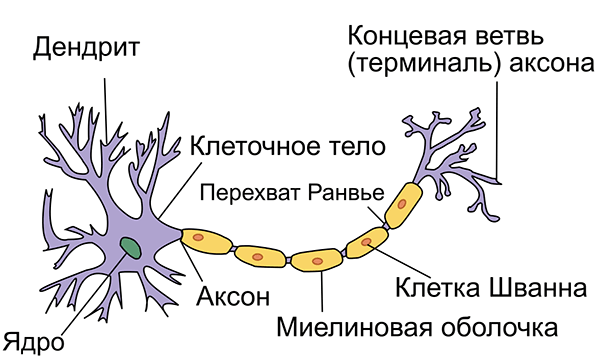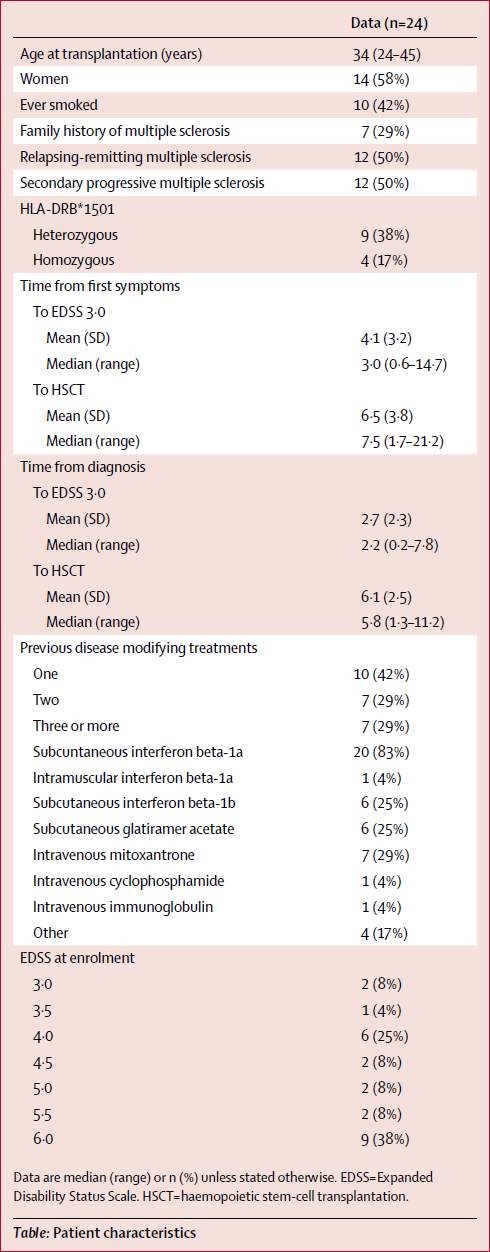Reinstall the immune system. A radical new treatment for multiple sclerosis has proven its effectiveness.
During clinical tests, chronic autoimmune disease was stopped in 17 of 24 patients, but one died of complications.

Results of magnetic resonance imaging of a healthy brain (left) and a patient with multiple sclerosis (right). Photo: Jessica Wilson / Science Photo Library
Canadian doctors have reported on the results of clinical trials of a radical approach to the treatment of multiple sclerosis with stem cells, writes New Scientist . The proposed method can be called extreme. Imagine that the treatment or completely rid you of the disease, or kill.
However, the test results are encouraging. Some patients confined to a wheelchair have completely got rid of the symptoms and have now returned to full-fledged life, which can be called a miracle.
Multiple sclerosis is a chronic autoimmune disease in which the myelin sheath of nerve fibers is affected. The disease has nothing to do with "senile sclerosis" (such a disease does not exist at all) and is radically different in symptomatology.
')
In multiple sclerosis, a person’s own immune system attacks the body, attacking the protective myelin sheath of nerve fibers in the brain, spinal cord and optic nerve. The foci of disease are gradually expanding. Myelin serves as electrical insulation for electrically conductive nerve fibers. A widespread insulation failure leads to disturbances in the transmission of current through the electrical circuit throughout the body. The nervous system gradually begins to fail, a person is struck by blindness or paralysis, and in the end the nervous system fails completely, which means death.

Neuron structure Orange color shows myelin sheath.
Multiple sclerosis occurs in young and middle age (15-40 years). The causes of the disease are unknown to doctors, but to date, several factors have been found that correlate with the appearance of multiple sclerosis.
- The distance from the equator (probably due to a decrease in endogenous production and consumption of exogenous vitamin D in areas with less sunlight), a high risk zone - regions north of the 30th parallel on all continents.
- Stress .
- Smoking
- Vaccination against hepatitis B (despite the results of a scientific study, the World Health Organization published a statement that an analysis of available information does not confirm the hypothesis that hepatitis B vaccination increases the risk of developing the disease).
- Low uric acid levels .
The main feature of the disease is the simultaneous damage of several different parts of the nervous system, which leads to the appearance of a variety of neurological symptoms in patients.

About 20 million people in the world suffer from multiple sclerosis, most often women living in more northern countries, such as Canada and Russia, the northern regions of the United States.
Existing medications can weaken the frequency or strength of attacks of the immune system on the myelin sheath of nerve cells, but do not eliminate the disease and do not affect some patients.
A radical approach by Canadian physicians involves treating a disease by completely destroying the existing immune system and reinstalling it with stem cells. Stem cells are a special type of cells in the body that can specialize on their own or produce offspring in the form of specialized cell types. In this case, they are used to create a new immune system.
This method of treatment suggests that the disease should completely disappear. The immune system stops attacks on the body. Moreover, as shown by clinical tests, over the years, the human body is able to rearrange itself and repair damage caused by the disease in previous years. That is, the nervous system self-restores, so that the lost functions gradually return to the patient.
Despite the risky approach, the results of clinical trials are encouraging. For example, one of the patients who participated in the experiment, Jennifer Molson from the Canadian province of Ontario, decided on an experimental radical treatment 14 years ago , when the disease reached a stage where the girl was under the round-the-clock supervision of doctors in Ottawa Hospital, moving only on walkers, with a cane or in a wheelchair. When she was released on weekends, she was being cared for by her boyfriend, and she completely relied on his help: he cut her food and fed her, dressed her and bathed her in the bathroom. That is, Jennifer could not live a normal full life without help. By the time of maximum development of the disease, the girl lost control of the bladder and intestines.
Patients with such a severe form of multiple sclerosis will agree to any experimental solution, even a very risky one. Therefore, Jennifer Molson was one of the first to take part in clinical trials for a complete reinstallation of the immune system. In 2002, doctors began to destroy her immune system. She became one of 24 patients who were selected for the first clinical test of this experimental method.
Interestingly, this method of treatment of multiple sclerosis was discovered quite by chance in the treatment of patients with leukemia, who simultaneously suffered from multiple sclerosis. Leukemia (leukemia) is a malignant disease of the hematopoietic system, one of the methods of which treatment involves the extraction of bone marrow cells with further destruction of the human immune system using intensive chemotherapy. A sample of bone marrow cells is cleared of cancer cells and returned to the body to create a new, clean immune system. To the surprise of doctors, this method of restarting the immune system in some patients cured not only leukemia, but also multiple sclerosis.
Doctors have no idea why the immune system attacks the myelin sheath of nerve cells. According to one theory, this is a false positive of the immune system in response to a viral infection, when the virus protein is similar to myelin. As in the case of allergic reactions, in such cases the immune system does not have time to develop an antidote, so that it responds to a dangerous threat quickly and aggressively (but not always accurately). If such a theory is correct, then reinstalling or resetting the immune system erases information about the signature of the allergen (virus) from its “memory”, so that attacks on it stop.
Today several medical centers in the world offer such a radical experimental treatment of multiple sclerosis, provided that the patient suffers from a severe form of the disease and ordinary medicines do not work. If a patient has a moderate disease, then doctors offer a milder form of chemotherapy, which reduces the likelihood of curing the disease.
Of the 24 patients who participated in the Canadian clinical test, 17 people managed to stop the development of the disease. True, the re-installation of the immune system was not easy for them: chemotherapy is accompanied by hair loss, loss of nails, nausea, diarrhea, it causes infertility and early menopause in women. But the most dangerous is the risk of infection, when a person’s immune system is completely absent in the first weeks, and then very weak. It was because of the infection that one of the patients had to transplant the liver, and he died due to the complications of transplantation.
18 months after starting treatment, Jennifer Molson noticed the first physical improvements, and after three years she was able to return to work. By now, her life has completely returned to normal, the disease has disappeared without a trace, and Jennifer is no different from all other healthy people. On weekends, she goes skiing and paddling in a kayak. On weekdays, Jennifer works as a researcher at the very hospital in Ottawa, where she used to be as an incurable patient.
The scientific work with the results of clinical tests in Canada was published on June 8, 2016 in The Lancet magazine (doi: 10.1016 / S0140-6736 (16) 30169-6, pdf ). This is the first scientific work in the world, which describes the successful treatment of multiple sclerosis with a long-term positive effect without the use of special medicines.
The first table shows data on 24 patients who underwent the procedure for replacing the immune system between October 2001 and December 2009.

None of the patients showed a relapse after stem cell treatment. A total of 314 MRI procedures were performed (marked with strokes in the right chart), the average time for tracking patients after treatment is 6-7 years. A cross signifies the death of a patient, an asterisk means censorship of a scientific study, when the patient subsequently received additional alternative, experimental, or unreliable treatment, so that he was excluded from the sample.

“We all avoid this word with the letter" and ", but these patients are cured," says Michael Rudnicki, director of the Regenerative Medicine Program and Sprott Center for Research on Stem Cell Research at the Ottawa Health Research Institute, who did not participate in scientific work so can afford such loud expressions. - Jennifer Molson moved in a wheelchair in a rehabilitation center and could not work. And now she is skiing, got married and got a driver's license again. I think this will be the new standard for the treatment of advanced multiple sclerosis. ”

Jennifer Molson at different stages of recovery after treatment
At the moment, the actual mortality in the treatment is 1% (not 4%, as in this clinical test in 24 patients). Now doctors want to try another chemotherapy option, which is less likely to cause complications to the liver. Perhaps mortality can be reduced. You can try less radical chemotherapy options to find a balance between effectiveness and toxicity, experts say.
Source: https://habr.com/ru/post/395195/
All Articles